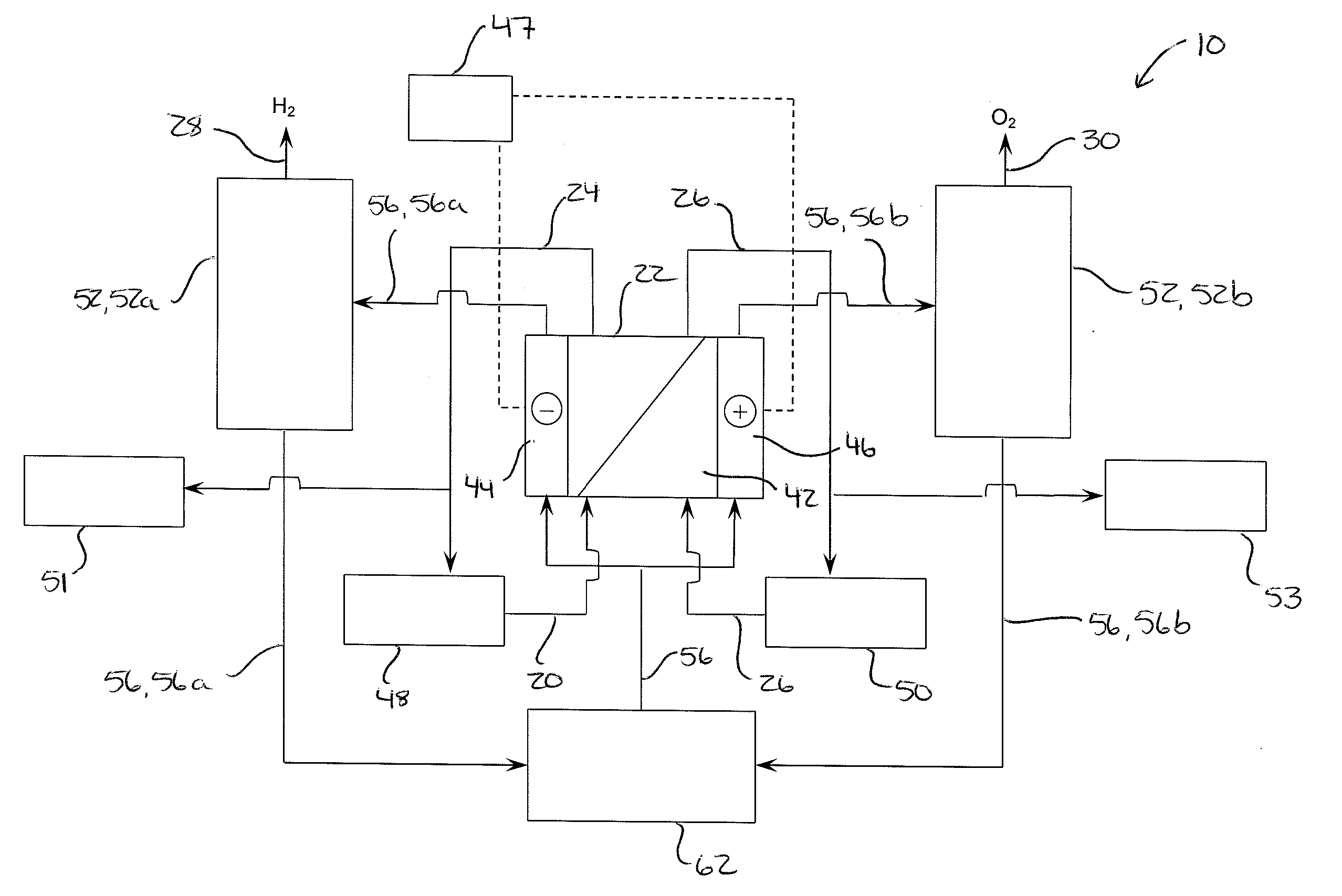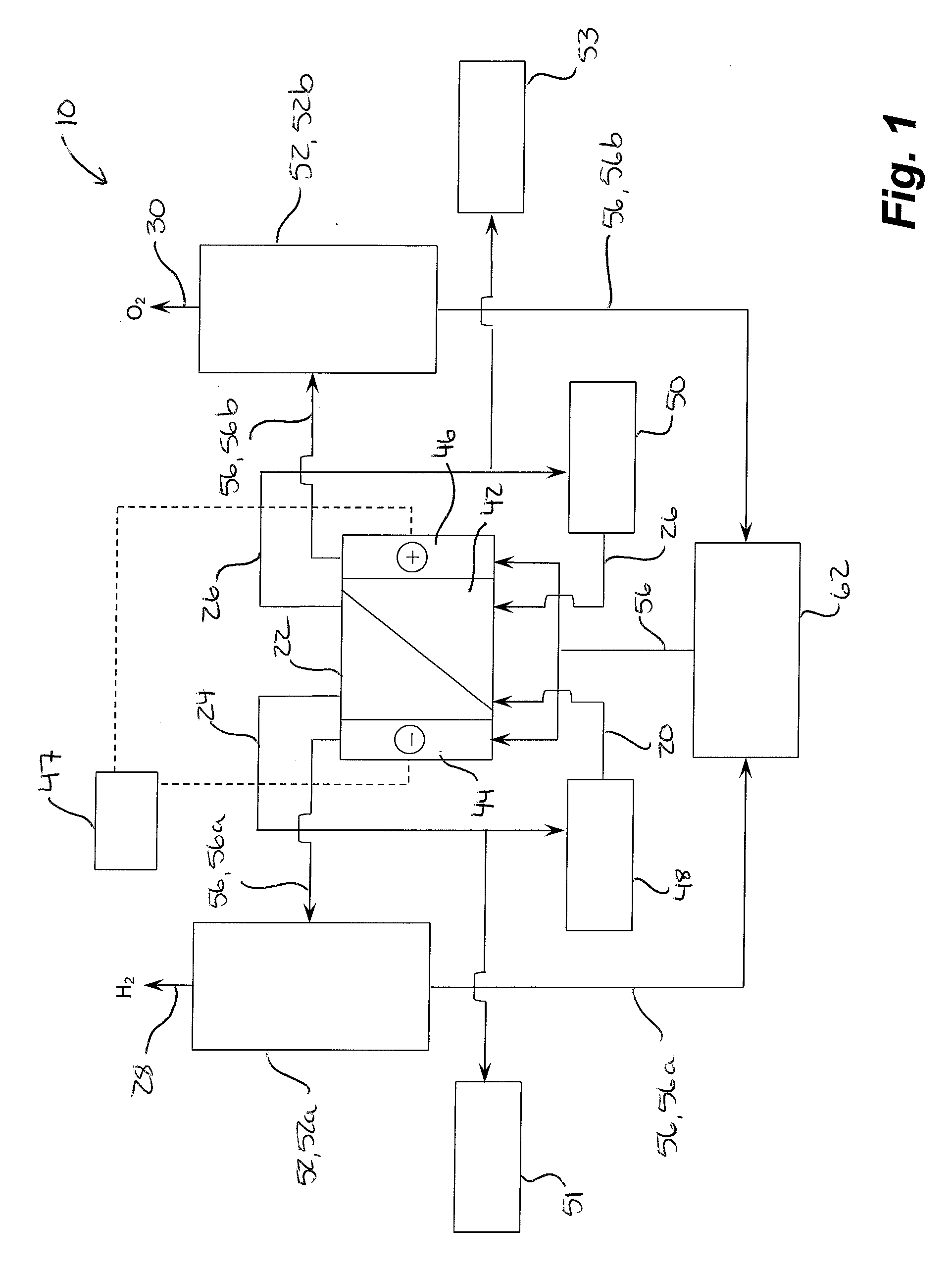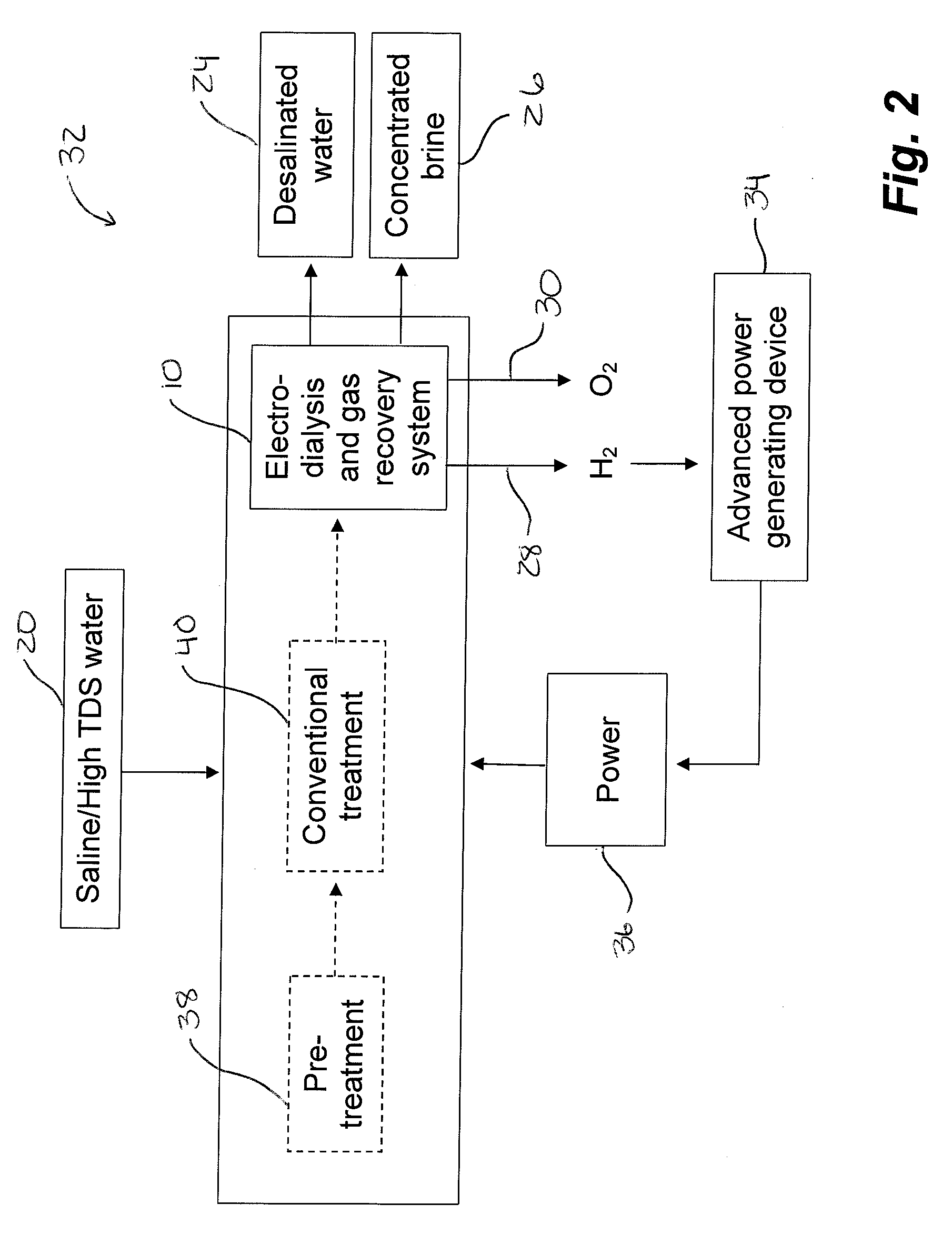System for recovering gas produced during electrodialysis
a technology of electrodialysis and gas recovery, which is applied in the direction of electrolysis components, filtration separation, lighting and heating apparatus, etc., can solve the problems of extreme ph imbalances in the ed unit, deterioration of the ed unit's ion exchange membrane, etc., and achieve the effect of reducing the energy consumption of the overall water treatment process
- Summary
- Abstract
- Description
- Claims
- Application Information
AI Technical Summary
Benefits of technology
Problems solved by technology
Method used
Image
Examples
Embodiment Construction
[0030] It is to be understood by one of ordinary skill in the art that the following is a description of exemplary embodiments only and is not intended as limiting the broader aspects of the invention.
[0031] With reference to FIG. 1, a system 10 for recovering gas produced during electrodialysis is generally shown in which salt-containing feed water 20 is fed through an electrodialysis (ED) cell 22 to produce an low TDS or desalinated water stream 24 and a concentrated TDS brine stream 26, while recovering separate streams of hydrogen gas 28 and oxygen gas 30.
[0032] With reference to FIG. 2, the system is particularly useful as part of an energy efficient water treatment system 32 in which the recovered gas, in particular hydrogen gas 28, is used as a fuel source for a power generating device 34 (e.g. solid oxide fuel cells (SOFC), bio fuel, gas or alternative energy powered generators, hydrogen proton exchange membrane (PEM) fuel cells) that provides power 36 to the unit operatio...
PUM
| Property | Measurement | Unit |
|---|---|---|
| Temperature | aaaaa | aaaaa |
| Pressure | aaaaa | aaaaa |
Abstract
Description
Claims
Application Information
 Login to View More
Login to View More - R&D
- Intellectual Property
- Life Sciences
- Materials
- Tech Scout
- Unparalleled Data Quality
- Higher Quality Content
- 60% Fewer Hallucinations
Browse by: Latest US Patents, China's latest patents, Technical Efficacy Thesaurus, Application Domain, Technology Topic, Popular Technical Reports.
© 2025 PatSnap. All rights reserved.Legal|Privacy policy|Modern Slavery Act Transparency Statement|Sitemap|About US| Contact US: help@patsnap.com



